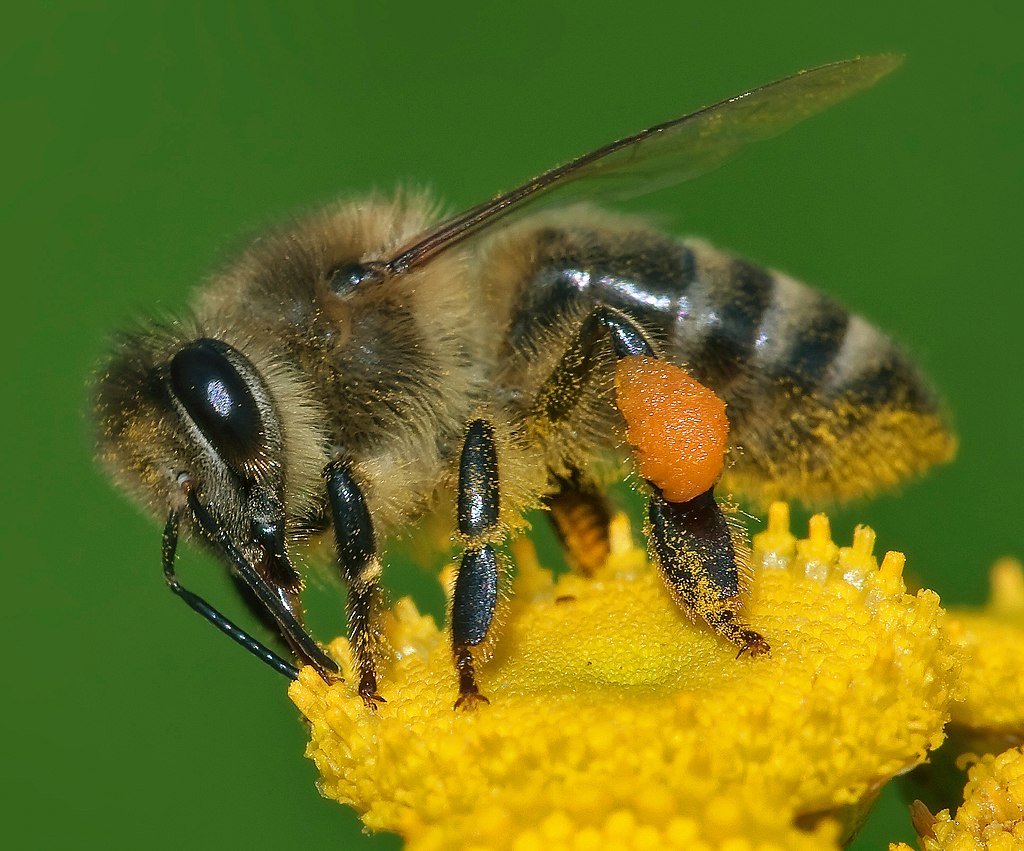
A Stormcloud of Bees
Throw out the word “electricity” today and one clear connotation rules. The juice that runs the world, coming to us through hanging power lines or buried cables. The electricity that runs computers, televisions, appliances, and, increasingly, automobiles. This type of power is current electricity, a stream of charged particles that travels through a conductor or space, conveying energy.
But electromagnetism is a huge umbrella, under which many phenomena take refuge.
We learn about one such branch early in school, likely because its effects can be demonstrated in ways that transfix children: static electricity. This type of electricity occurs when an imbalance of charges exists between two materials after they have come into contact. Perhaps the most famous illustration of this happening involves a human’s hair and a balloon.
Rub a balloon on your hair and some of the negatively-charged electrons from your hair will transfer to the balloon, giving the inflated object a negative charge. You can then stick it on the wall or pick up pieces of paper with the balloon because the negative charge is attracted to the more-positively-charged other objects.
That’s static electricity in an (electron)nutshell.
The objects will remain charged until an electrostatic discharge evens the disparity. This is the static shock you feel when you touch a doorknob. However, static electricity and its discharges are not relegated to tiny jolts and science experiments. In fact, nature’s biggest bolts are the result of static electricity. Lightning is a large-scale electrostatic discharge, the result of a charge disparity created in the clouds.
Static electricity isn’t even limited to solid objects that contact each other.
Charge imbalances happen all around us. Consider the honey bee: scientists discovered these insects become positively charged just by flying through the air! The friction of their moving body parts with the atoms in the atmosphere creates static electricity.
This attribute isn’t just a quirk of living as a physical entity; being positively charged actually allows the bees to survive. When a bee lands on flowers or other plants, negatively-charged pollen naturally sticks to the winged insects.
Scientists recently discovered that plants actually hear the buzzing of bees, which prompts them to produce more and sweeter nectar to attract the fliers. It seems this interaction is even more intricate, as bees can also see the electrical fields produced by flowers. Experiments showed bees could see the negatively-charged flowers, which acted as giant neon signs for free pollen.

Though researchers realized bees flew around as agents of static electricity, they never really knew how much charge a swarm held.
As it turns out, according to a new study, the answer is quite a bit.
A group in Bristol, England, noticed an unexpected rise in atmospheric electricity at a weather station, despite a clear lack of nearby thunderstorms. Nothing seemed out of the ordinary, other than the swarms of bees who lived on the site looking for new spots to craft hives. Could these insects be(e) the cause of the high atmospheric electricity?
The researchers placed electrical field monitors near the beehives. When the bees left their home in a swarm, the scientists checked the instruments and found that atmospheric electricity rose 100 volts per meter. In continued tests, they registered measurements up to 1,000 volts per meter.

That sounds like a lot of electricity, but, without some context, it’s just a number.
1,000 volts per meter is six times the charge of an electrified dust storm and eight times larger than a stormcloud! One large swarm of bees can produce as much juice as eight clouds in a thunderstorm.
Further, the denser the swarm of bees, the larger the electrical field became. This fact allowed scientists to model extrapolations to other swarming insects, such as locusts, which are known for giant, crop-destroying clouds. Based on their modeling, large locust swarms might produce as much electricity as an entire thunderstorm, not just several individual clouds.
Though individual swarms of bees do not seem to be potent enough to create lightning, their effect is large enough to register on atmospheric monitors, which means they can actually affect local weather or environmental patterns. Meteorologists already knew that electrical fields in the atmosphere can ionize particulates, such as dust or pollutants. This ionization can force the particles to change locations. Dust and pollutants can not only foul the air, but they can change the amount of light that reaches an area, which has a profound effect on localized weather conditions.
Beyond the fact that electrical bee swarms seem inherently fascinating, it’s possible that they and other entities flying around might have tangible impacts on our weather!
Further Reading and Exploration
Observed electric charge of insect swarms and their contribution to atmospheric electricity – iScience
Honey, It’s Electric: Bees Sense Charge On Flowers – NPR
Honeybee Swarms Can Produce as Much Electric Charge as a Storm Cloud – Smithsonian Magazine
A swarm of honeybees can have the same electrical charge as a storm cloud – Popular Science
Swarming bees may potentially change the weather, new study suggests – LiveScience













